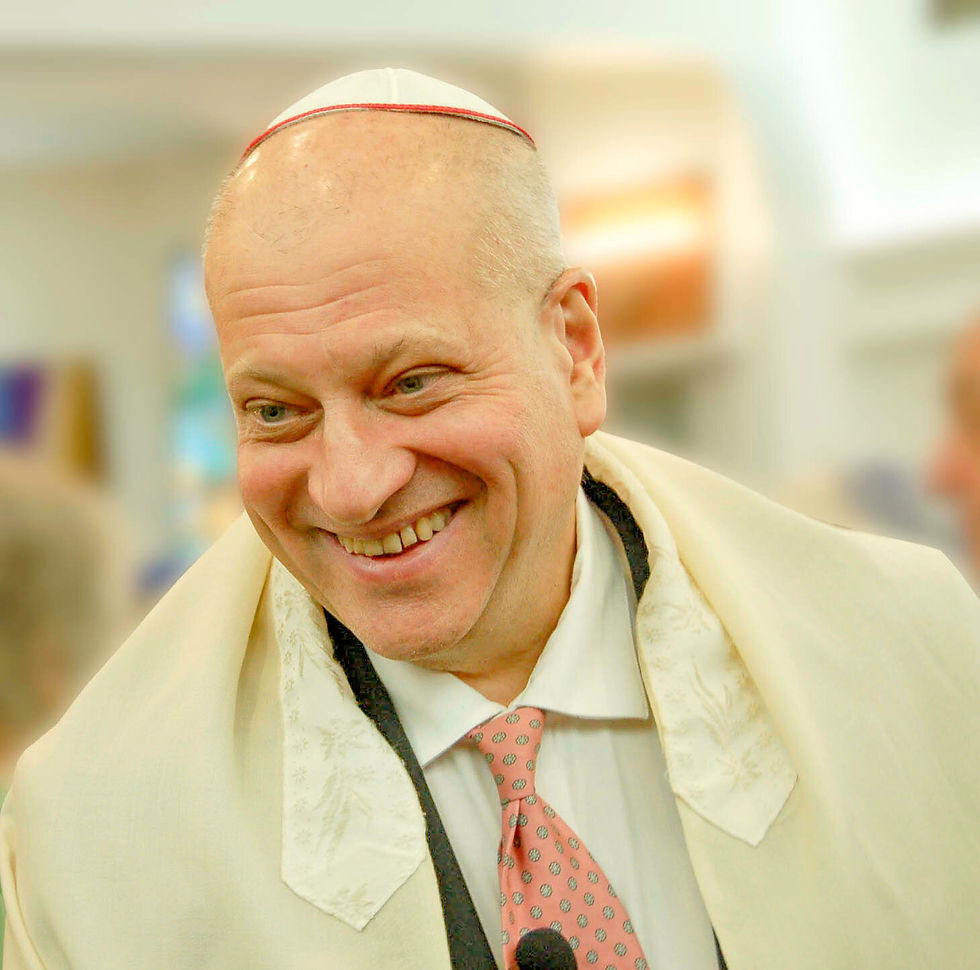Texas Rabbi Among Dying Breed of Torah Scribes
- danaevankaplan
- Jul 26, 2018
- 3 min read

Barry S. is from Longview. I met Rabbi Honan recently in Alabama.
Linda Leavell Jul 26, 1997 LONGVIEW, Texas
Rabbi Bernard Honan peers through his
glasses, pokes a quill pen into a jar of ink and lovingly dabs at the fading Hebrew letters of the Torah.
At 69, Honan's hand is steady as he methodically restores Torahs to their original condition by cleaning the parchments, re-stitching them and fixing the smudged letters.
He likens a Torah requiring repair to a stepchild: "You didn't give birth to it, but you saw it through some difficult times." The Torah, or the first five books of the Bible, establishes the fundamental laws of moral and physical conduct by which Jews live.
It begins with a description of the origin of the universe and ends on the word Israel, after the story of the death of Moses. Honan initiated his parallel profession as a scribe because the scrolls at the synagogues where he worked, starting in New Hampshire, had been poorly maintained.
"From the time that I was in Concord on, first as a matter of necessity and then as matter of almost love of it, we were faced with the problem of Torah repair," he says. "So I put my own hand to it and realized I'd made some gruesome mistakes. So I decided I was going to study it."
He studied with scribes in Boston and New York, where he learned the minutiae of penning Torahs, which have been made the same way, with the same text, for some 2,000 years.
The text is written on hides made from the skin of a kosher
animal that has a cloven hoof, like a cow. Dozens of hides are then sewn together with animal sinews to make a scroll. Maimonides, considered the most influential Jewish scholar of the Middle Ages, prescribed a general formula in which a Torah is divided into 260 columns, with three to eight columns per hide, 42 lines of text per column, and 30 characters per line.
An accomplished scribe is familiar with the five books' 792,077 letters and 410,638 "crowns," which decorate some of the letters, totaling more than 1.2 million characters. When Honan started working on scrolls, he assumed his background in Hebrew calligraphy, cultivated at the Jewish Institute of Religion, was all he needed.
"All the places where the scribes of old established rules about size of letters and spacing and everything else, I simply didn't know at that time. So I made the typical mistakes that they warned those who don't know would make and therefore disqualify the scrolls," he says.
He's restored some 400 scrolls in the past 40 years, but he's never written one from start to finish, a project he estimates takes eight months of dedicated labor. His completed works are used in at least a dozen temples.
He cites as his most memorable a scroll dating at least 500
years to Catalonia, Spain. It was seized by the Nazis, who stashed it in a salt mine in Prague in what was then Czechoslovakia. After World War II, it ultimately ended up with a Washington, D.C., congregation that wanted it restored. "And that took a long time," Honan says. "But when you were through with it, you said to yourself, "This is a piece of history. This went back before the Inquisition.'"
Most usable scrolls are no more than 125 years old. A single piece of parchment costs at least $100; a complete Torah costs $20,000 to $70,000, Honan says. Many synagogues buy an existing Torah from another congregation or a Jewish book dealer, rather than commission a new one.
A scroll that is no longer restorable is given a funeral and
buried intact or is taken apart and pieces buried with people the congregation wishes to honor.
Honan estimates he is one of about a dozen Torah scribes in the United States. Rarer still is that he lives in Longview, an East Texas town of about 72,000, where his Reform congregation numbers about 40.
A New York native, Honan began his long rabbinical career in 1951 at temples and college campuses along the East Coast and in Alabama. He decided to move to the Bible Belt community of Longview in 1988.
"I was getting on in years and I didn't want the pace of
activity that's normally connected with a large congregation," he explains.
Because scribes are a dying breed, Honan is on a committee that is working to establish a program to train disciples outside the Orthodox movement.
Committee members are scheduled to meet in August in New York to discuss curriculum, the application process and certification.
http://www.tulsaworld.com/archives/texas-rabbi-among-dying-breed-of-torah-scribes/article_aae0c358-4e5a-5451-a447-20bfced1092f.html

Photo credits: Sara Crocker




Comments